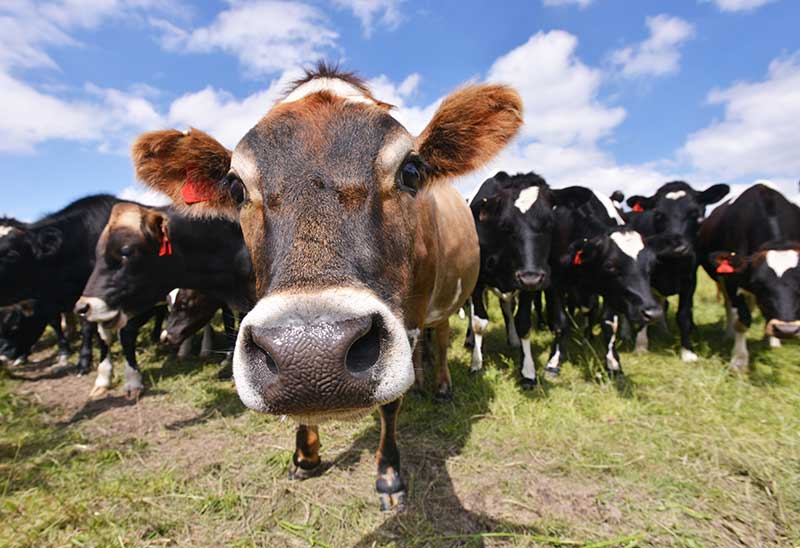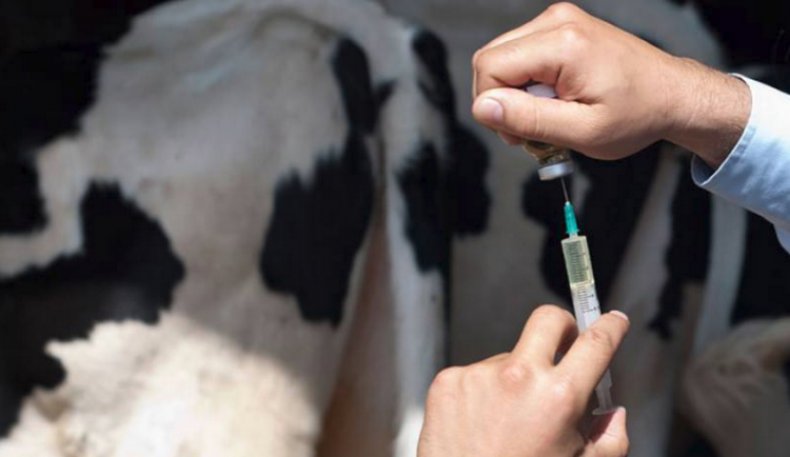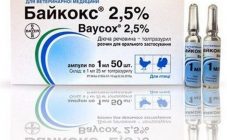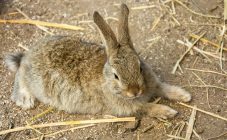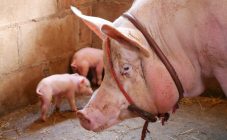Content:
Leptospirosis is a widespread bacterial disease common to animals and humans. Cattle are quite susceptible to infection. Bovine leptospirosis causes great economic damage. In addition to the death of young animals and adults, the disease provokes abortions, the birth of weak or dead calves, the depletion of sick animals, and a decrease in milk yield in cows.
The cause of the disease
The causative agent of leptospirosis is a bacterium from the genus Leptospira. There are many varieties of them; bacteria of 7 serogroups are isolated in animals. In cows, the disease is mainly caused by four types of leptospira. These differences are taken into account in the manufacture of vaccines and therapeutic sera.
The bacterium does not form spore forms, therefore it quickly dies in the external environment. Drying, direct sunlight, heating to 76 ° C and above are destructive for them.
Leptospira are rapidly inactivated by all known disinfectants.
Characteristics of the disease
Leptospirosis is more often recorded in cattle and pigs. But other species of animals are also susceptible to infection. The reservoir of infection is rodents (mice, hamsters, marmots, and others). They remain carriers throughout life and shed dangerous bacteria in urine and faeces, contaminating feed, pasture and water.
Infection occurs through food, bedding, pasture, but more often through water: non-drying puddles, swamps, ponds, stagnant water, rivers with a slow current are dangerous. The infection is transmitted through milk, through semen (stored in frozen semen for up to three years), sexually and intrauterinely.
Once in the body, bacteria are carried with the bloodstream to all organs and tissues, penetrate the placenta into the fetus. The liver and kidneys are severely affected. In the kidneys, leptospira remain for a long time even in the presence of a high level of antibodies in the blood.
The disease manifests itself as isolated cases or a small outbreak of infection. An asymptomatic course is especially dangerous. In this state of affairs, a dysfunctional herd can contain up to 20% of infected animals. Carriage by cattle lasts for six months. During this period, the animal releases bacteria into the external environment, becoming a source of infection.
Signs of leptospirosis
Leptospirosis in cows takes several forms. Moreover, in young animals, the disease is more severe than in adults. From the moment of infection until the first symptoms appear, it takes from 3 to 20 days.
The acute course is characterized by the following symptoms:
- an increase in body temperature for several hours (40-41.5 ° C);
- strong oppression;
- sometimes short-term rampage;
- rapid and weak pulse;
- refusal to feed, no chewing gum;
- rapid breathing;
- severe yellowness of the mucous membranes;
- soreness in the kidney area;
- blood in urine (brown, cherry color), difficulty urinating, decreased amount of urine or its complete absence;
- diarrhea followed by constipation;
- foci of dying tissue, sores on the skin, gums, lips, udder nipples.
The acute form is observed in calves aged 2 weeks to 1.5 years. Yellowness and blood in the urine appears 4-6 days after the temperature rises.
In pregnant cows, abortions occur 2-5 weeks after infection. Most often, animals abort in the second half of pregnancy. In the later stages, the fetus can survive, as it already develops its own defense against leptospira. There is little or no milk in cows, it acquires a pronounced yellow color.
The acute form of leptospirosis lasts 3-10 days. Without treatment, 50-70% of diseased individuals die.
The subacute course of the disease lasts up to 3 weeks. The symptoms are the same, but less pronounced. In most cases, the subacute form of leptospirosis ends with recovery.
Chronic disease in cows is rare. In this case, the following signs are noted:
- weight loss;
- periodic rise in temperature;
- decrease in the amount of milk and its fat content;
- the affected areas and bald patches are visible on the skin;
- the mucous membranes are pale;
- lymph nodes in the groin are enlarged;
- barrenness;
- complications in childbirth and the postpartum period;
- abortion;
- stillbirth of calves.
During periods of increased body temperature, urine becomes brown.
In adult cows, there is an atypical course of leptospirosis. Symptoms last 12 to 48 hours, are mild, and pass quickly. Characteristically:
- a slight and short-term increase in body temperature (by 0.5 ° C);
- weakness;
- darkening of urine.
Mild jaundice sometimes occurs.
How to make a diagnosis
The diagnosis is made by a veterinarian. Consider the well-being of the area, the general nature of the disease, signs; if there are dead animals, then changes in internal organs. The final diagnosis is made after laboratory tests. Leptospira can be seen in a smear imprint under a microscope. To determine the type of pathogen, microbiological studies of urine, blood, internal organs, and abortion material are carried out.
There are serological tests (PMA and RA) that determine the presence of protective antibodies in the blood serum. They are used to assess the welfare of the herd and to identify sick individuals.
Leptospirosis treatment
If you suspect leptospirosis, each animal in the herd is examined, body temperature is measured (if the cattle population is large, then thermometry is done selectively). Sick and suspicious animals are treated, healthy ones are vaccinated.
For the treatment of leptospirosis, specific serum and antibiotics are used.
- Polyvalent hyperimmune serum against leptospirosis for farm animals. It contains protective antibodies that neutralize infectious bacteria. The drug is administered intramuscularly at the rate of one kg of body weight: for calves under one year old, 0.5 ml, for cattle over one year old - 0.4 ml. The protective properties of the serum appear 4-6 hours after injection and persist up to 25 days.
- Streptomycin intramuscularly 2 times in knocks for 4 - 5 days at a dose of 10-12 thousand units per kg of body weight.
An alternative to antibiotic therapy is the use of a 7% aqueous solution of azidine. It is administered subcutaneously at a dose of 4 mg per kg of body weight. Injections are done twice - on the first and third days from the onset of the disease. The method significantly reduces the costs and laboriousness of treatment, but is not noted in the instructions for combating leptospirosis, therefore it is not widely used.
In addition, symptomatic therapy is carried out:
- glucose solution 40%, 5-500 ml intravenously;
- Ringer's solution or hemodesis - intravenously;
- caffeine or sulfocamphokaine - subcutaneously;
- Glauber's salt - inside, 25-500 g;
- urotropin - inside 0.5-20 g.
Treatments also include surgical debridement of dead skin. Wounds and ulcers are washed with solutions of potassium permanganate or furacilin. After cleaning, the affected areas are smeared with boric vaseline, ichthyol ointment.Post-abortion cows are prescribed standard therapy (sanitation of the uterine cavity, stimulants of muscle contraction, rectal massage).
Prevention and control measures
The guidelines for the prevention of leptospirosis prescribe the following measures:
- introduction of animals into the herd only from safe farms;
- quarantine of newly arrived individuals for a month;
- regular studies of cattle serum;
- trapping and research of rodents;
- bacteriological examination of drinking water;
- regular deratization of the farm and pastures;
- registration of abortions and stillbirths, research of abortion material;
- maintaining pastures in good sanitary condition;
- prevention of contact of cattle with other domestic and wild animals;
- organization of watering animals with water from a water supply system or artesian wells.
When confirming the diagnosis of leptospirosis, restrictions are imposed on the farm:
- you can not take out livestock, sell slaughter products, milk from sick cows;
- rearrangement of cattle within the farm is prohibited without the knowledge of the veterinarian;
- livestock unvaccinated against leptospirosis must not be brought into the farm.
Measures are being taken to eliminate the disease.
- Divide the animals into groups. Sick cows are treated or forced to kill. Healthy individuals are vaccinated immediately, patients are vaccinated 5-7 days after recovery.
- Stop grazing unvaccinated cows.
- Drinking is carried out only with tap water.
- They carry out repairs and reorganization of walking areas and premises for animals.
- Compulsory disinfection of barns is carried out every 10 days.
Restrictions are removed 2 months after the farm is recognized as safe according to the results of laboratory tests. In fattening farms - after the delivery of livestock for slaughter and final disinfection of the premises and the territory of the farm.
Vaccines against leptospirosis
Vaccination of cattle against leptospirosis is carried out in disadvantaged areas and threatened areas, when completing the feeding herd without studies for leptospirosis. For cattle, there is a vaccine of the same type, but from different manufacturers. The drug contains killed variants of Leptospira.
- VGNKI vaccine of the Stavropol biofactory (option II): Leptopro - suspension, Leptogard - dry.
- VGNKI vaccine of the Armavir plant.
The timing of vaccination is set by the veterinarian. According to the instructions, the drug is administered once. The first vaccination is given at 45 days of age. For calves up to one year old, the injection is repeated after 6 months, adult cows are revaccinated once a year. Immunity to infection with leptospirosis is formed 2-3 weeks after the introduction of the vaccine.
According to indications, vaccination with complex vaccines is possible:
- against leptospirosis and emphysematous carbuncle;
- against leptospirosis and campylobacteriosis.
Symptoms and treatments for leptospirosis in cows should be known to every animal owner. This dangerous disease requires veterinary control, compliance with strict measures to prevent the spread among animals and human infection.


